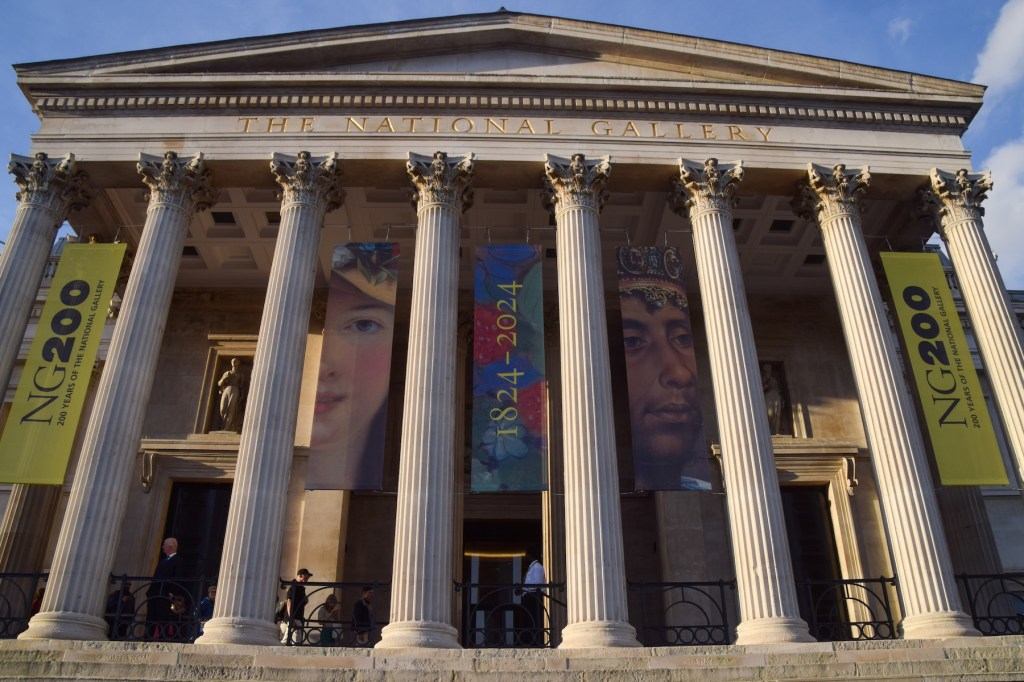The Headlines
‘WE HAVE A NEW RUBENS!’ A lost painting by 17th-century Flemish master Peter Paul Rubens has been found and positively identified in France, reports AFP and Le Monde. The 1613 painting of Jesus on the cross is reportedly in very good condition and was discovered in September 2024 by French auctioneer Jean-Pierre Osenat in a Paris mansion that he was preparing to sell. But it wasn’t until recently that experts were able to confirm via X-ray imaging and pigment analysis that Osenat’s hunch was right. Osenat recalled a fateful phone call from German art historian Nils Buttner, who delivered the findings of a committee of Rubens experts following their analysis: “Jean-Pierre, we have a new Rubens!” Buttner said. The painting will be offered for sale on November 30.
Related Articles

‘BAD BLOOD’ IN LONDON? Following news this week that the National Gallery would start collecting art made after its long-held 1900 cut-off date, many wondered how that change would sit with its neighbor specializing in modern art, the Tate. The Guardian now reports that the expansion of the National Gallery’s collection means both public institutions had to “tear up an agreement” that doled out which works went to which collections, ending a rivalry that came to a head in the 1970s. Unnamed “senior sources” are now reportedly worried the new policy will create “bad blood” and potentially spur the two museums to go “at each other’s throats.” While Tate director Maria Balshaw welcomed the news, the Guardian reported that “behind the scenes,” it’s a whole other story, though some Tate staff apparently sympathize with the National Gallery’s perspective. “They can’t really just stop right at a certain point as we get further away [from 1900], it starts to become more and more arbitrary,” one unnamed senior figure at the Tate told the Guardian.
The Digest
The 1908 Singha Durbar Palace in Kathmandu was among the landmarks destroyed in fires during protests over government corruption and a social media ban this week in Nepal. [Hyperallergic]
Ashraf Omar Eldarir, a former doctor from Egypt, has been convicted in New York of smuggling hundreds of looted artifacts from his home country and was sentenced to six months in a US federal prison. In 2020, Eldarir was caught at New York’s John F. Kennedy International Airport with a suitcase containing 590 ancient artifacts that still smelled of wet earth and sand, suggesting they had been dug up recently. [The Art Newspaper]
The Getty Villa in Los Angeles is opening its first exhibition since the January Palisades fire shuttered the building. The show, “The Kingdom of Pylos: Warrior-Princes of Ancient Greece,” features the “Pylos Combat Agate” a small, carved stone that wasdiscovered in 2017, shedding new light on ancient Greek culture. [Los Angeles Times]
Ten more artists have been commissioned to create new works for the forthcoming Obama Presidential Center, slated to open in the South Side of Chicago by 2026. Barack Obamahimself and Michelle Obama were involved in conversations about the artist selection, which includes Nick Cave, Nekisha Durrett, Jenny Holzer, Jules Julien, Idris Khan, Aliza Nisenbaum, Jack Pierson, Alison Saar, Kiki Smith, and Marie Watt. [Artnet News]
The Munich gallery Walter Storms is opening a new, 2,150-square-foot space in Berlin for the city’s current Art Week. The opening exhibition, on view until October 31, is devoted to the work of the late German painter and printmaker Günter Fruhtrunk. [Tagesspiegel]
The Kicker
REMEMBERING A TRAGEDY. The New York Public Library has acquired what is likely the largest collection of publicly sourced footage of the September 11 attacks and their aftermath, according to the New York Times . “Do you have video footage from the week of 9/11?” asked an ad in The Village Voice taken out by filmmakers Steven Rosenbaum and Pamela Yoder not long after the terror attacks. “You can contribute to history,” it continued. The resulting material, some 500 hours of footage, captured the collective mood. The mostly unseen archive may be open to the public by 2027, and will eventually put online. “It’s about 9/11, but it’s also a meta-documentation of the debate about its meaning,” said Julie Golia, the library’s senior curator of manuscripts.

